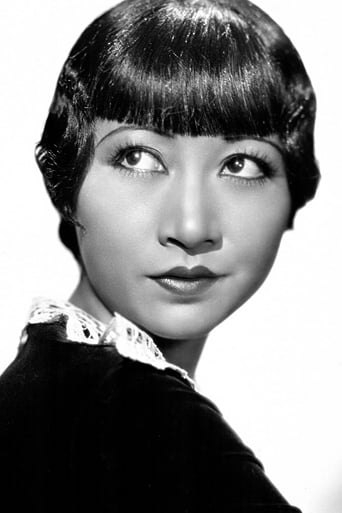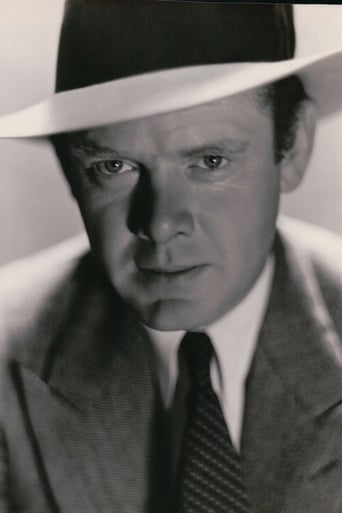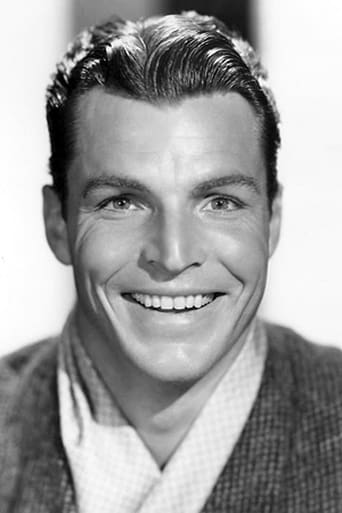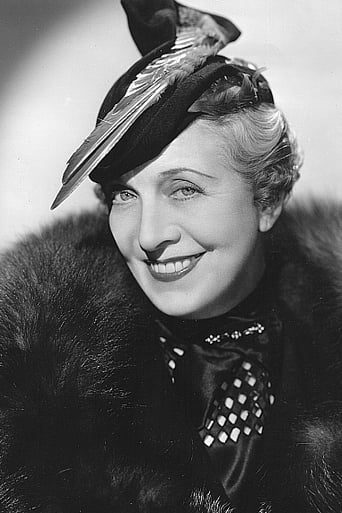JohnHowardReid
The delectable Anna May Wong has a great role in Daughter of Shanghai, a 1937 "B" which achieved an immediate cult reputation when Paramount suddenly re-issued it twenty years later. Oddly, when Charles Higham asked director Robert Florey about the movie, he couldn't even remember making it! Directed at breakneck speed, the screenplay is not only packed to the gills with action and incident, but a series of arresting characters, led of course by the resourceful Anna May Wong who is partnered by way-down-the-cast-list's Philip Ahn (of all people) against the baddies led by hideously credible, super-sleazy Charles Bickford and smarmy, high society Cecil Cunningham in by far the most impressive role of her whole eighty-plus picture career. Other notables like jealously possessive Evelyn Brent and all-out villainous Fred Kohler also make their mark—as does Frank Sully in an unexpected hero-to-the-rescue bit.Yes, the plot may be a "B"-movie standard, but it's given a great work-out here by director, writers and players. Charles Schoenbaum's noirish photography and Robert Odell's knock-out sets also assist no end.
crossbow0106
This film is about smugglers who take people from other parts of the world and bring them to the United States to work for others (sounds almost contemporary). Anna May Wong plays the daughter of Quan Lin, a successful merchant, who refuses to "buy" anyone for his business. He gets killed and his daughter narrowly escapes. This plays as a film noir, and it could even be considered a B movie, but it is pretty good. The plot thickens, there are a few surprises and then there is the beautiful, accomplished actress Anna May Wong. She was something special. I liked its pacing, and I feel it is a film you should watch, if you're into mystery and intrigue. Check it out.
MartinHafer
This is a relatively low budget B-movie and aside from one factor, it's pretty ordinary for the genre. The difference is the casting. First, the film has an unusually large number of very talented supporting characters such as Charles Bickford, Buster Crabbe, Anthony Quinn and J. Carrol Naish. Second, in a very unusual move for its sensitivity, the film stars two Asian actors--Anna May Wong and Philip Ahn. In just about every other case during this era, Asian leading characters were played by Westerners and this is the only film of the era I can think of that was made in the USA that had two Asians playing leading and sympathetic roles. Oddly, while Ahn is clearly the leading man, he is given low billing while Wong gets top billing. Perhaps this is because he was never a star and didn't command the same level of pay as Wong, although in Ahn's VERY long career, he appeared in 174 parts! The film is about an evil group of human smugglers who kill Wong's father and try to kill her as well. Instead of waiting to inherit her father's fortune and live a quiet life, she goes undercover to infiltrate the gang. Later, Ahn also appears with the baddies, as he also infiltrated the gang. Now it's up to the pair to bring these folks to justice.The fight scenes and script are all pretty standard. Apart from its sensitive portrayal of the Chinese (they were like real people--not patronized or evil), there isn't a whole lot to make this film anything other than a standard B programmer. However, for cinephiles like myself, it's an important film for being a bit of a milestone for Asians in Hollywood--too bad that this success didn't translate to more such films until the 1960s and later.
briantaves
DAUGHTER OF SHANGHAI is unique among 1930s Hollywood features for its portrayal of an Asian-focused theme with two prominent Asian-American performers as leads. This was truly unusual in a time when white actors typically played Asian characters in the cinema. At best, Hollywood assigned some Asian roles to Asian performers and some to whites stars in the same film, with results that seem discordant today even if widely accepted at the time. DAUGHTER OF SHANGHAI was prepared as a vehicle for Anna May Wong, the first Asian-American woman to become a star of the Hollywood cinema. Appearing in some 60 movies during her life, she was a top billed player for over twenty years, working not only in Hollywood, but also in England and Germany. In addition, she was a star of the stage and a frequent guest performer on radio, and would headline the first American television series concentrating on an Asian character, THE GALLERY OF MME. LIU-TSONG (Dumont, 1951).Born in 1905, Wong was the daughter of a Chinese immigrant who ran a Los Angeles laundry. Her Chinese name, Wong Liu Tsong, was Cantonese for Frosted Yellow Willow. A career in the movies began in the typical manner of the time; she saw a local film crew at work and knew at that moment the life she wanted to pursue. She overcame family opposition and by 1922 had played the lead role, a Madame Butterfly-part, in THE TOLL OF THE SEA, the first Technicolor feature. As simultaneously a star, yet one whose roles were necessarily limited, at least in Hollywood's view, by ethnicity, Wong's career oscillated between major roles and character parts or exotic bits in Chinatown or far eastern scenes. Wong embodied a Chinese beauty that was new to Hollywood films and beguiled spectators in Europe and the United States, who accepted her in any type of role, whether playing hero, villain, or victim. The frequency with which portraits and articles about Wong appeared in magazines, despite the many relatively small roles and secondary billing, demonstrated the incredible popularity she had with the mainstream Caucasian audience. Wong was typically described as an intelligent, independent woman whose life was suspended between the two worlds of East and West, invoking the racial mythology of the time. Nonetheless, she frequently found herself losing roles to white performers that should have been hers. The evidence of press coverage strongly suggests that moviegoers had more progressive inclinations than the conservative studio chiefs and producers who made the casting decisions. Wong's star was in the ascendant with the coming of sound, with a number of vehicles written expressly for her. In PICCADILLY (1929), she plays a nightclub vamp. The Sherlock Holmes story A STUDY IN SCARLET (1933) was changed to feature Wong. She appeared in Edgar Wallace's play On the Spot, about a gangster and his Chinese mistress, later filmed as DANGEROUS TO KNOW (1938), a masterpiece largely forgotten because it is out of television circulation and held by only one archive. DAUGHTER OF SHANGHAI was another picture written for her, as Paramount in attempted to revive her star luster in the wake of a well-publicized trip she made to China.No other late Wong movie so strongly situates her at the center of the action as DAUGHTER OF SHANGHAI. She plays a woman attempting to uncover the murderer of her father, in the process exposing racketeers illegally smuggling Chinese aliens into the United States. The whole picture was shot in a month, and suffers from the budgetary limitations along with the use of many thriller clichés. The plot admittedly resembles a screen serial by placing the heroine in a series of perilous predicaments, but this was also one of the few forms available at the time for a woman to display her own courage and self-sufficiency. One of the sequences reveals her dancing skill, which was seen in many of her films, including THE Chinese PARROT (1928) and LIMEHOUSE BLUES (1934). Wong's costar and on-screen romantic interest in DAUGHTER OF SHANGHAI was Philip Ahn. He plays perhaps the first Asian FBI agent seen on the screen, a part all the more interesting since the immigration racket is shown as controlled by Caucasians but broken by members of the very race it exploits. Ahn was the same age as Wong, and they were High School friends, but he had begun his screen career only two years earlier, in 1935. At the last minute, Paramount wisely assigned DAUGHTER OF SHANGHAI to director Robert Florey, a French emigre who was also an enthusiastic devotee of Far Eastern art. Many of his masks, swords, costumes, and furnishings decorate the sets in this picture. Florey had directed in Switzerland, France, Morocco, England, and Germany, and earlier in the same year as DAUGHTER OF SHANGHAI, he had made his second journey to China and Japan. Florey hoped to interest Hollywood in making movies on location, spending several months shooting footage from the streets of Shanghai to the Japanese film studios, and some of that film still survives. He had scripted A STUDY IN SCARLET for Wong in 1932, and he directed her next picture, DANGEROUS TO KNOW. In the four years after DAUGHTER OF SHANGHAI, Wong's career declined once more. During much of the 1930s and into the 1940s she used her name recognition to speak out against Japan's war against her ancestral land and on behalf of Chinese relief. Two 1943 war films for a poverty row studio, BOMBS OVER BURMA and LADY FROM CHUNGKING, depicted the role of the Chinese woman in the conflict. They also marked Wong's last screen appearance as a movie star. Her remaining roles were sporadic over the final fifteen years of her life, and she died at a relatively youthful age, in 1961. Only in recent years has Wong's importance been recognized, and much research is needed into her life and films and those of other Asian pioneers during the Hollywood studio era.




